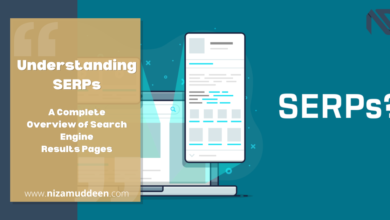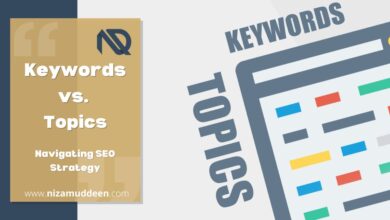Are your users struggling to navigate your website?
Is your content getting lost in a sea of confusion? Discover the secrets to enhancing user experience with our comprehensive guide.
Imagine a website where every piece of content is clear, engaging, and easy to read.
My guide dives deep into the principles of UX readability, offering practical tips and proven strategies. From typography to layout, learn how to make your content shine and keep your users coming back for more.
Transform your website into a user-friendly haven!
My expert insights will help you create content that not only attracts but retains visitors. Say goodbye to high bounce rates and hello to satisfied users who find exactly what they need with ease.
Don’t miss out on the opportunity to elevate your website’s UX.
What is UX & Readability?
UX & Readability, or User Experience & Readability, refers to how easy it is for users to read and understand content on a website or digital interface.
This concept is important because it directly impacts how effectively information is communicated and how users interact with the content.
This includes various factors like:
- Typography: The style and size of the text.
- Layout: How the content is arranged on the page.
- Language: The words and sentence structures used.
- Visual Hierarchy: The way important information stands out.
When content is easy to read, users can quickly understand the information, navigate the site better, and have a more enjoyable experience overall.
Key Elements of UX & Readability:
Typography:
- Choose fonts that are legible on different devices and screen sizes; serif for print, sans-serif for digital.
- Use a base font size of 16 pixels for body text to ensure readability.
- Maintain a line height of 1.5 times the font size to enhance readability.
- Adjust spacing between letters and words, especially in headings, for improved legibility.
Content Layout:
- Use empty space around text to reduce clutter and improve focus on content.
- Left-aligned text provides a consistent starting point for each line, enhancing readability.
- Ensure sufficient contrast between text and background colors for readability.
Content Structure:
- Clear and descriptive headings aid navigation and organize content hierarchically.
- Keep paragraphs short (3-4 sentences) to improve readability and comprehension.
- Use lists to make information scannable and easy to grasp quickly.
Language and Tone:
- Use plain language and avoid jargon to make content accessible to a broader audience.
- Write in an active voice for clarity and engagement.
- Maintain a consistent tone and style throughout content to aid understanding.
Accessibility:
- Ensure text is compatible with screen readers and other assistive technologies for users.
- Design content to be readable on various devices; responsive design adjusts layout and font sizes.
Importance of UX & Readability:
Readable content keeps users engaged, encouraging them to spend more time on the website and explore more pages.
Clear and readable content helps users understand the information, leading to better decision-making and a positive user experience.
Well-written and easily readable content establishes trust and credibility, making users more likely to return and recommend the site to others.
Improved readability can lead to higher conversion rates, as users are more likely to complete desired actions (e.g., signing up for a newsletter, making a purchase) when they can easily navigate and understand the content.
Impact of UX & Readability on SEO
UX Readability is crucial for SEO because it affects how users interact with content on websites. When content is easy to read and understandable, people are more likely to stay longer on a site, click on links, and explore different pages.
Search engines like Google use these behaviors to decide which sites are most relevant and useful.
So, good readability not only makes users happy but also helps websites rank higher in search results, bringing in more visitors and potential customers over time.
Here’s how UX Readability affects SEO in detail:
Improved User Engagement:
When content is easy to read and understand, users are more likely to stay on the website longer, reducing bounce rates. Low bounce rates signal to search engines that the content is relevant and valuable, potentially improving rankings.
Readable content encourages users to spend more time on the site. Increased dwell time suggests that users find the content useful, which can positively impact SEO rankings.
Enhanced User Interaction:
Clear and readable titles and meta descriptions in search results attract more clicks. Higher CTR indicates to search engines that the content is relevant to users’ queries, potentially boosting rankings.
Pogo-sticking occurs when users click on a search result, quickly return to the search results page, and click on another result. Good UX Readability can reduce pogo-sticking by ensuring that users find what they are looking for quickly and easily.
Accessibility and Inclusivity:
Websites that prioritize UX Readability often adhere to accessibility standards, such as using readable fonts, proper contrast, and clear navigation.
Accessibility improvements can widen the audience reach, including users with disabilities, and signal positive user experience to search engines.
Positive User Signals:
Engaging and readable content is more likely to be shared on social media platforms, generating backlinks and increasing brand visibility. Social signals indirectly contribute to SEO rankings.
Readable content that provides value can lead to positive reviews and recommendations, which can influence SEO through increased brand authority and trustworthiness.
Mobile Friendliness:
UX Readability often overlaps with responsive design practices, ensuring content is readable and navigable across different devices.
Mobile-friendly sites are favored by search engines, especially since mobile usability is a ranking factor.
Content Quality and Relevance:
Well-structured content, with clear headings and organized information, enhances readability and helps search engines understand the relevance of the content to user queries.
Readable content naturally integrates relevant keywords without keyword stuffing, contributing to organic search visibility.
UX Readability directly impacts SEO by improving user engagement metrics, reducing bounce rates, enhancing user interaction, and ensuring accessibility.
Strategies for Enhancing UX & Readability!
Improving UX readability means using smart design and content strategies to make information on websites and digital interfaces easy to read, understand, and navigate. It’s about organizing and presenting content in a way that anyone can quickly grasp and enjoy.
Designers focus on things like choosing clear fonts, arranging text neatly, and using simple language. By doing this, they make sure that visiting websites is a breeze, no matter what device you’re using.
The goal is to keep things simple, clear, and user-friendly, so everyone can easily find what they need and have a pleasant time online.
Here are detailed strategies to achieve this:
Typography:
- Choose clear sans-serif fonts like Arial or Helvetica for digital content, ensuring readability on various devices.
- Use at least 16 pixels for body text; increase sizes for headings to enhance visibility.
- Maintain 1.5 times the font size for adequate line height, improving readability.
- Adjust spacing to enhance legibility, especially in headings and larger text blocks.
Content Layout:
- Use ample space around text and elements to reduce clutter and improve focus.
- Left-align body text for readability; avoid centered or right-aligned text, especially in long paragraphs.
- Ensure strong contrast between text and background colors; dark text on a light background is ideal.
Content Structure:
- Use clear headings for easy navigation. Proper hierarchy (e.g., H1, H2, H3 tags) helps users and search engines.
- Keep paragraphs concise with 3-4 sentences for better readability and comprehension.
- Use bullets and numbered lists to organize information, making it easier to scan and understand key points.
Language and Tone:
- Avoid jargon and technical terms; write clearly for your audience.
- Use it for direct and engaging communication.
- Maintain a steady style for clarity and user understanding.
Tools and Resources to check the Readability!
Ensuring content is easily understandable and accessible is essential for effective communication. Using tools and resources to check readability helps writers and designers assess how clear and comprehensible their text is to readers.
These tools analyze factors like sentence complexity, vocabulary difficulty, and overall readability scores, providing valuable insights to enhance the clarity and effectiveness of written content.
Introduce content creators to readability tools such as Hemingway Editor, or Readable.io.
These tools analyze content and provide suggestions for improving readability, including identifying complex sentences or passive voice.
User Testing:
Conduct user testing to gather direct feedback on the readability of your content.
Tools like UsabilityHub or platforms like UserTesting.com can help you understand how real users interact with your content.
Google PageSpeed Insights:
Use Google PageSpeed Insights to evaluate the loading speed of your pages.
Faster-loading pages contribute to a positive user experience, especially on mobile devices.
Google Analytics:
Leverage Google Analytics to analyze user behavior, including bounce rates and average session duration.
Identify pages with high bounce rates or low engagement for targeted improvements.
Summary of the Topic
- UX & Readability: UX Readability focuses on enhancing the accessibility and comprehension of content through typography, layout, and language, ensuring a seamless user experience.
- Impact on SEO: Improved UX Readability positively influences SEO by reducing bounce rates, increasing dwell time, and enhancing user engagement metrics, which are critical factors for search engine rankings.
- Strategies for Enhancing UX & Readability: Implementing strategies such as optimizing typography, organizing content with clear headings and concise paragraphs, and using tools like Hemingway Editor or Yoast SEO ensures content is clear, engaging, and accessible across devices.
- Tools and Resources: Tools like Hemingway Editor, Yoast SEO, and Readable.io provide valuable insights into readability metrics, helping content creators refine their writing for better user engagement and SEO performance.
By prioritizing UX Readability, organizations can significantly improve their digital presence, enhance user satisfaction, and achieve higher visibility in search engine results, ultimately driving greater success in the competitive digital landscape.



